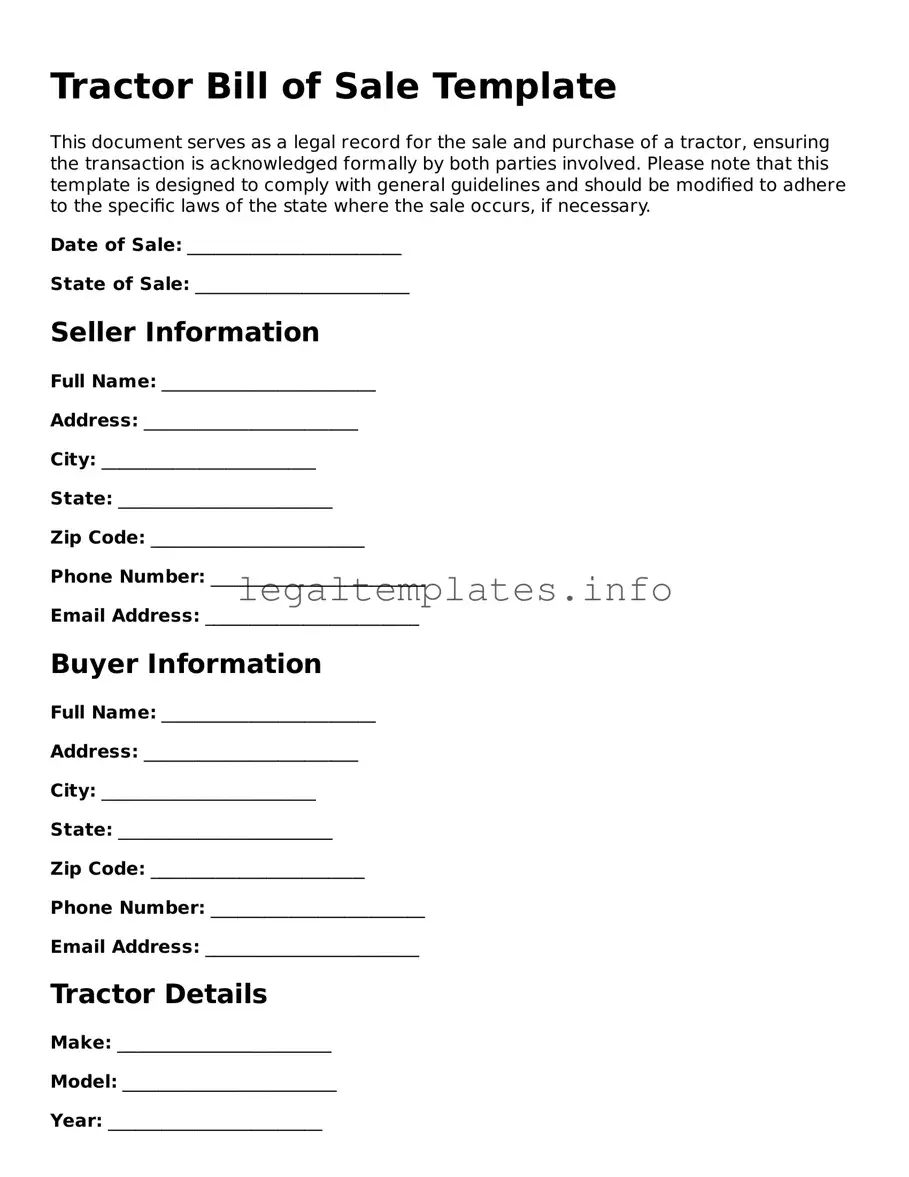Tractor Bill of Sale Template
This document serves as a legal record for the sale and purchase of a tractor, ensuring the transaction is acknowledged formally by both parties involved. Please note that this template is designed to comply with general guidelines and should be modified to adhere to the specific laws of the state where the sale occurs, if necessary.
Date of Sale: ________________________
State of Sale: ________________________
Seller Information
Full Name: ________________________
Address: ________________________
City: ________________________
State: ________________________
Zip Code: ________________________
Phone Number: ________________________
Email Address: ________________________
Buyer Information
Full Name: ________________________
Address: ________________________
City: ________________________
State: ________________________
Zip Code: ________________________
Phone Number: ________________________
Email Address: ________________________
Tractor Details
Make: ________________________
Model: ________________________
Year: ________________________
VIN: ________________________
Color: ________________________
Condition: ________________________
Sale Details
Sale Price: $________________________
Payment Method: ________________________
Other Conditions: ________________________
Signatures
Both parties confirm that the above information is accurate and that the sale of the tractor has been agreed upon by both parties. By signing below, the Seller and the Buyer acknowledge the sale and agree to the terms and conditions listed herein.
Seller's Signature: ________________________Date: ________________________
Buyer's Signature: ________________________Date: ________________________
This document is executed in good faith and is intended to bind not only the parties who have signed below but their successors, heirs, and assigns.
